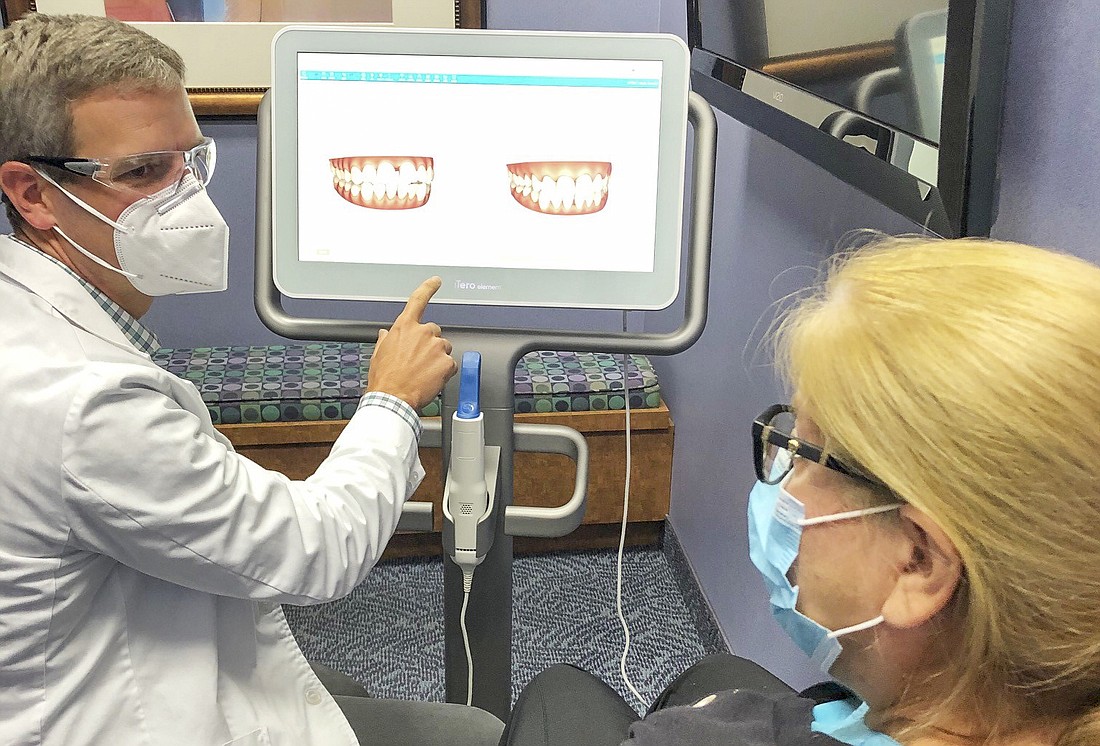- January 14, 2025
-
-
Loading

Loading

Through the years, as the field of medicine has advanced, so has the technology that goes with it.
For many, a trip to the orthodontist’s office to get braces is an unpleasant experience, but things have changed tremendously, said Dr. Breck Brewer — a board-certified orthodontic specialist at Fravel Brewer Orthodontics in Ocoee.
“Traditional braces have come a long way since our current patients’ parents,” Brewer said. “It has changed a lot since those days, so that the technology has improved we can allow for a greater period of time between appointments, where sometimes we only see patients every three months or something — we don’t have to adjust all the time, and that is really a direct result of and through the technology in our wires and bracket systems.
“It’s nice in a sense, because we can get efficient treatment without as many visits,” he said.
A majority of Brewer’s — and Dr. William Fravel’s — customers still use the traditional brackets and wires, but a growing number are utilizing two of the biggest advancements in orthodontics: 3D printing and scanning, and aligner treatment.
“The 3D printing has made a huge difference in our industry because it has enhanced the aligner system,” Brewer said. “Some people can make aligners in their own office through 3D printing. You can have 3D printers in your office, you can make little molds of the teeth and have them printed and ready to go in no time.”
Thanks to being able to use a digital scanner, Brewer can take a 3D scan of the mouth — avoiding the old, uncomfortable mold that patients once had to hold in their mouth.
The machine used is a computer monitor mounted on a pedestal that moves about the office and has a wand connected to the monitor. The wand captures thousands of photos of a patient’s teeth as it is moved around the mouth. The process takes only three to five minutes, and it produces a stereolithic image.
“It’s all digital at this point,” Brewer said. “So, it’s a seamless approach where we can email laboratories your digital scan and come back with either a retainer made or an appliance that is going to help your bite — straight from the lab.”
The perk of this development is that seeing a mouth in 3D form allows an orthodontist — and a client — to get a better perception of what is needed. It’s also useful to explain things to patients, Brewer said.
Alongside the rise of 3D printing and scanning, aligners themselves have come a tremendous way since they were introduced.
“When it first came out 15 years ago, it was very limited in what it could do, and today it can nearly replace all braces,” Brewer said. “There are a few cases where braces can do better, but Invisalign can do literally everything and some orthodontists — I don’t think any in this area — have gone to 100% Invisalign.
“It has nice advantages, like the ability to take it out to eat and brush, and you can eat whatever you like and they’re virtually invisible,” he said. “All of the aligners have gotten better, but we feel really good with our choice to use Invisalign, because I think they are out in the forefront of everybody.”
With Invisalign, Brewer can send in the scan to the Invisalign website. There, he — and an Invisalign technician — can manipulate it.
“Each tooth is basically singled out, and we can move each tooth in three dimensions based on our goals,” Brewer said. “We basically have a starting point, and then we have an ending point, because we’ll put them in an ideal position based on what our goals are.
“Then each of those teeth will move a series of degrees and increments, so based on how much movement is how many aligners we need,” he said. “A lot of the software just kind of knows this stuff — it knows if you move a tooth five degrees, you can only do so many degrees each aligner.”
The individual’s dental situation determines how many aligners they will get, but each is made a bit differently to help move teeth.
The end goal with both new technologies of 3D printing/scanning and aligners allows for better health care for patients, as well as a better experience for them.
“The No. 1 thing is we want our patients to be happy and satisfied — we don’t want to push them through things that are unpleasant,” Brewer said. “That scanner has made a huge difference, and Invisalign aligners that comfortably wrap around your teeth are — in some ways — maybe less uncomfortable than wires.”